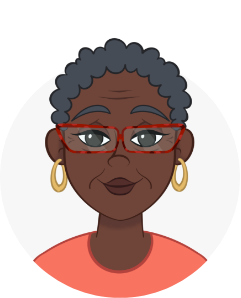Why Animation is More Effective Than Text-Based Solutions in Patient Education
- Dan Rolls
- Feb 11
- 4 min read
Dan Rolls, founder and CEO, GistMD
Feb 11, 2025
Introduction: The Challenge of Patient Education
Patient education has long been a critical component of effective healthcare. Yet, despite medical science and communication advancements, many patients struggle to understand their conditions, treatments, and necessary lifestyle changes.
Traditional text-based solutions—pamphlets, medical brochures, and written instructions—often fail to engage patients effectively. This failure is particularly concerning given that 36% of adults in the U.S. have basic or below-basic health literacy. When patients don’t fully grasp their health information, their ability to manage their conditions and adhere to treatment plans diminishes significantly.
As healthcare shifts toward a patient-centric model, new, engaging, and accessible communication methods are essential. One of the most powerful tools in this transformation is animation.
Why Animation Works Better Than Text-Based Approaches
1. Enhanced Comprehension Through Visual Storytelling
Studies show that people retain 80% of what they see and do, compared to only 20% of what they read. Animation transforms complex medical concepts into digestible visual narratives, making it easier for patients to understand their diagnosis, treatment, and next steps.
For example, a chemotherapy patient may struggle to absorb a lengthy document explaining the side effects. A short, engaging animation can demonstrate how the treatment works, what to expect, and how to manage side effects, reducing anxiety and improving preparedness.
2. Emotional Engagement and Trust Building
Healthcare journeys are often filled with stress, fear, and uncertainty. Animation has the unique ability to evoke emotions and foster a sense of comfort and trust. By using relatable animated characters and storytelling, patients can see themselves in the experience, increasing their emotional connection to the information presented.
At GistMD, we leverage animation to help patients feel supported and informed, turning passive recipients of information into active participants in their care.
3. Bridging Health Literacy Gaps
For many patients, medical jargon and complex instructions act as barriers to understanding their own health. This is especially true for:
Elderly patients who may struggle with digital literacy.
Patients with lower education levels may have difficulty reading complex medical terminology.
Non-native speakers may not fully comprehend written instructions in a foreign language.
Animated content transcends language barriers by using universal visual metaphors. For instance, an animated heart pumping blood is instantly understandable, regardless of the patient’s literacy level.
4. Increasing Patient Adherence and Reducing No-Shows
Patient engagement is directly linked to better health outcomes. By providing clear, memorable, and engaging education, animation plays a crucial role in improving:
Medication adherence: Many patients don’t take their medications as prescribed because they don’t understand the importance. Animation can explain how medications work and the consequences of missing doses, leading to higher adherence rates.
Treatment preparation compliance: Research has shown that animated educational interventions improved bowel preparation compliance for colonoscopy by 60%.
Outpatient attendance: Engaging, pre-appointment education has reduced outpatient no-show rates by 50% in hospitals using animation-based engagement tools.
Animation in Action: Real-World Impact
1. Reducing Physician Workload and Burnout
Physicians spend a significant portion of their time repeating the same educational messages to different patients. Animation standardizes and personalizes patient education, allowing doctors to focus on higher-value interactions.
At GistMD, our AI-powered personalized video technology has reduced physician workload by 25%, allowing them to dedicate more time to critical patient needs.
2. Personalized Learning for Chronic Disease Management
Chronic disease management requires long-term patient engagement. Animated content can be customized based on patient age, language, and cultural background, ensuring higher retention of health information.
For instance, a diabetic patient might receive:
A step-by-step animated guide on monitoring blood sugar levels.
A visual breakdown of how insulin interacts with the body.
Behavioral change animations to promote healthier lifestyle choices.
These tailored interventions empower patients to take control of their health, reducing hospitalizations and long-term complications.
3. The Pharmaceutical Industry’s Role in Animated Patient Education
Pharmaceutical companies lose billions of dollars annually due to medication non-adherence. A key factor is that patients don’t fully understand the importance of their prescriptions or the potential consequences of skipping doses.
Through the GistMD-3P Initiative, we partner with pharmaceutical companies to provide engaging, animated patient education videos starting at the prescription point. This approach has shown to improve adherence rates and patient outcomes while providing significant economic benefits for healthcare providers and pharmaceutical companies.
Beyond Education: Animation as a Therapeutic and Psychological Tool
Beyond delivering educational content, animation has been found to provide therapeutic benefits, including:
Reducing anxiety before medical procedures.
Serving as a distraction during painful treatments.
Helping pediatric patients understand their care in a non-threatening way.
For instance, a calm, friendly animation explaining an MRI scan can help reduce fear and movement, leading to more successful scans and fewer repeat procedures.
Conclusion: The Future of Patient Education is Animated
Healthcare is rapidly evolving, and static, text-heavy educational materials are no longer sufficient. To truly engage and empower patients, healthcare providers and pharmaceutical companies must embrace the power of animation.
At GistMD, we are leading the charge by creating personalized, AI-driven, animated patient education solutions that: ✔ Increase patient comprehension and adherence ✔ Improve healthcare efficiency and reduce physician workload ✔ Bridge health literacy and language barriers ✔ Deliver measurable economic benefits to healthcare systems and pharmaceutical companies
The future of patient education is visual, interactive, and deeply personalized. As we move forward, animation will play an increasingly central role in engaging patients, improving outcomes, and transforming healthcare as we know it.
Join the Conversation
Are you a healthcare provider or industry professional looking to enhance patient engagement? Let’s collaborate and bring the power of animation to the forefront of patient education.
Contact us at GistMD to learn more.





